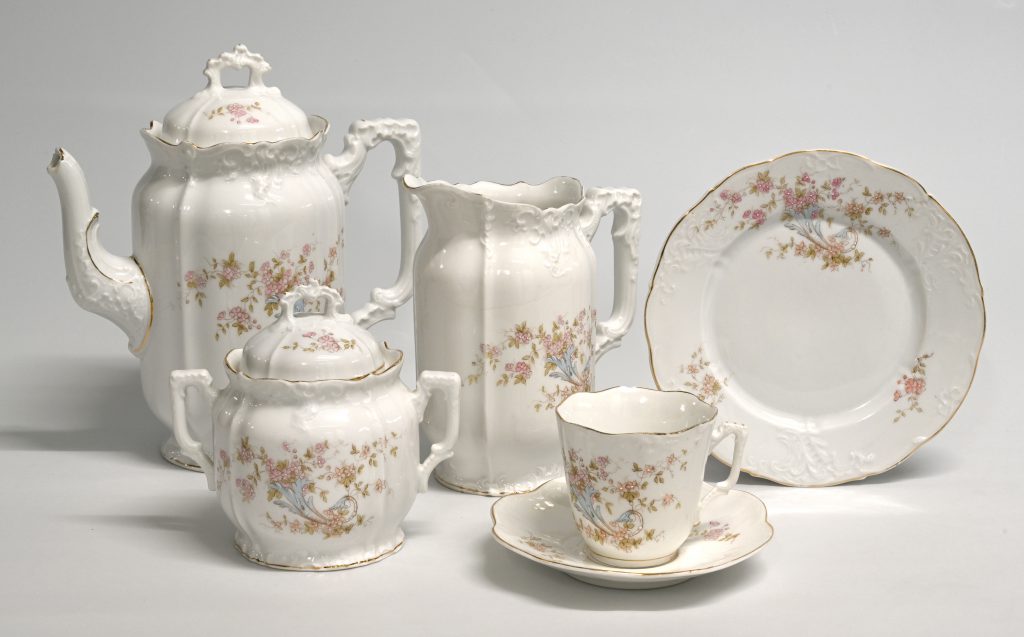
Porcelain can be divided into three main groups with different chemical and mineral compositions:
hard-paste porcelain, soft-paste porcelain and bone china.
As distinct from stoneware, refined white earthenware, earthenware and faience, all three types of porcelain are usually translucent and tend to be sufficiently hard-fired to fuse into a kind of natural glass.
Hard-paste porcelain
Ceramic material made from an artificial mixture, fully vitrified and glasslike, generally white and usually translucent. In hard-paste porcelain, the body consists of kaolin (a special type of white clay also known as china clay), feldspar (a ceramic flux) and quartz (facilitates vitrification of the body). Hard-paste porcelain is first fired to a biscuit at a temperature of 800ºC to 1000ºC. The object is then covered in a glaze that also contains feldspar, which is fused onto the body in a second, glost firing at 1350ºC to 1450ºC. Decorations can be applied to the biscuit surface in underglaze painting (usually in cobalt blue) which is then fired with the glaze. Onglaze decorations, on the other hand, are painted onto the glaze and require a third firing at lower temperatures between 800ºC and 900ºC (muffle firing). The gilding of porcelain (burnish gold or gold leaf) requires a fourth firing at 700ºC to 800ºC. The glaze on hard-paste porcelain cannot be scratched with a knife. While European hard-paste porcelain is generally white, Asian or Chinese porcelain usually has a slightly blue tinge.
Translation Sandy Haemmerle
German: Hartporzellan
French: porcelaine dure

